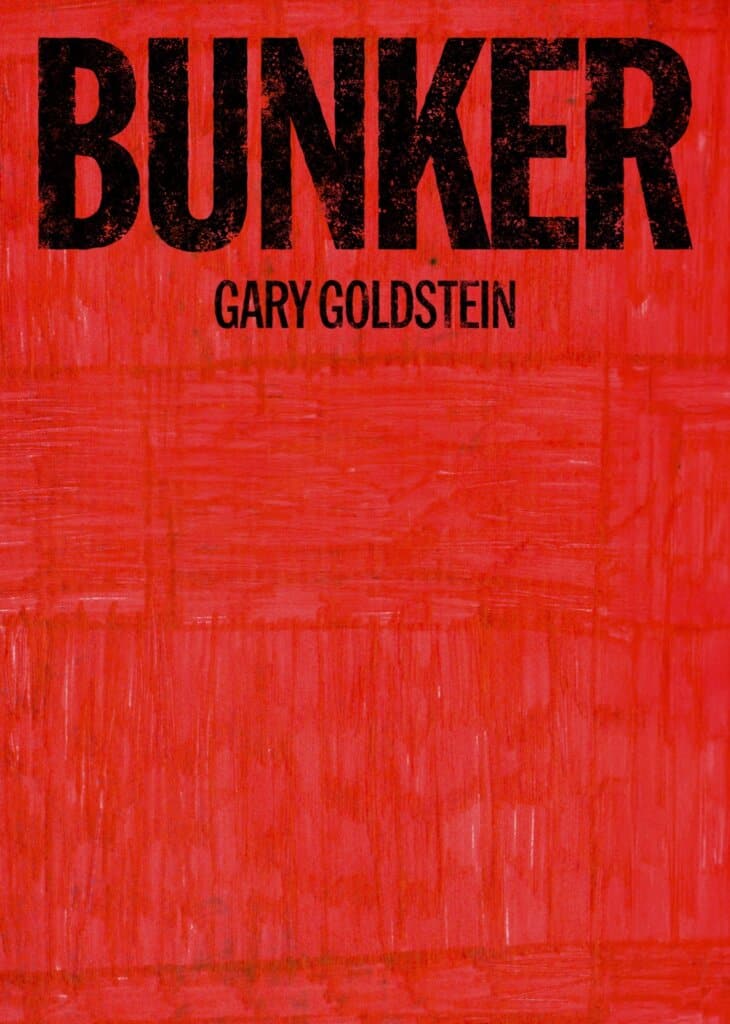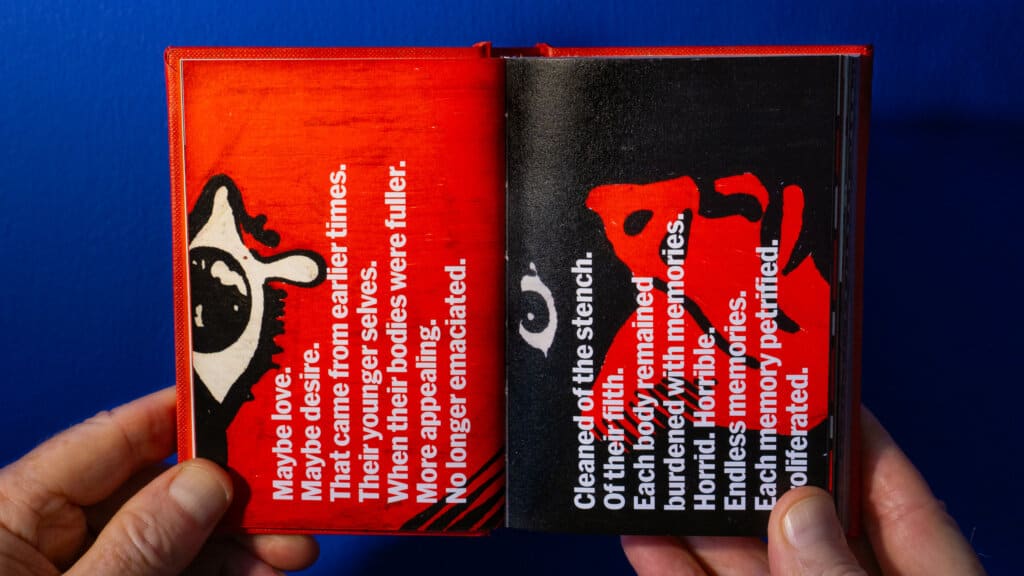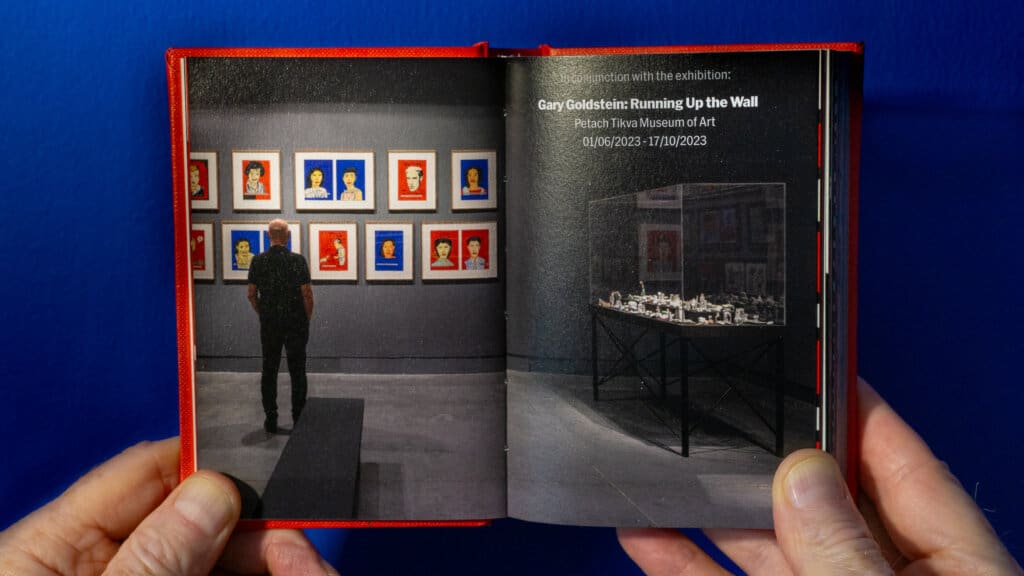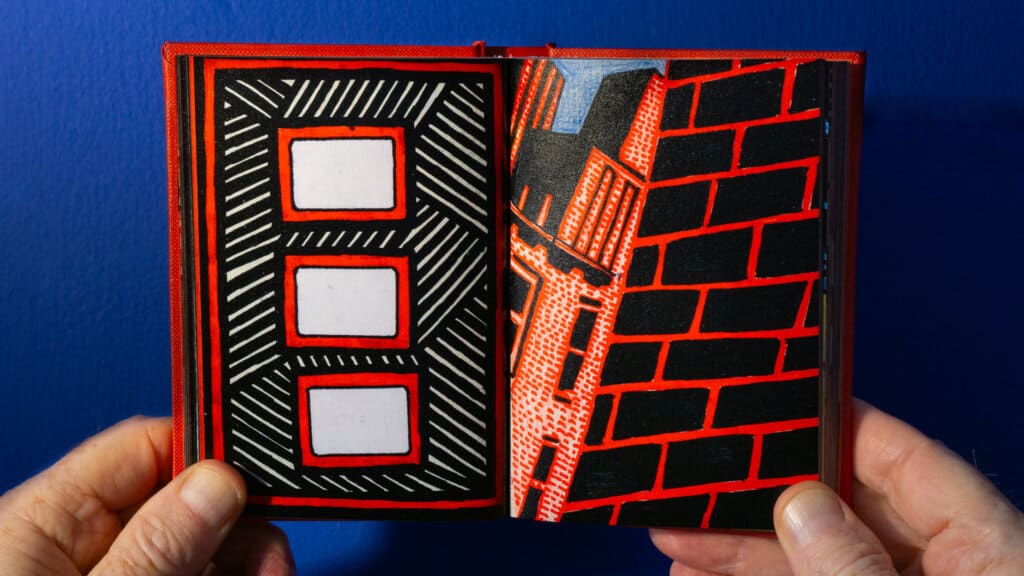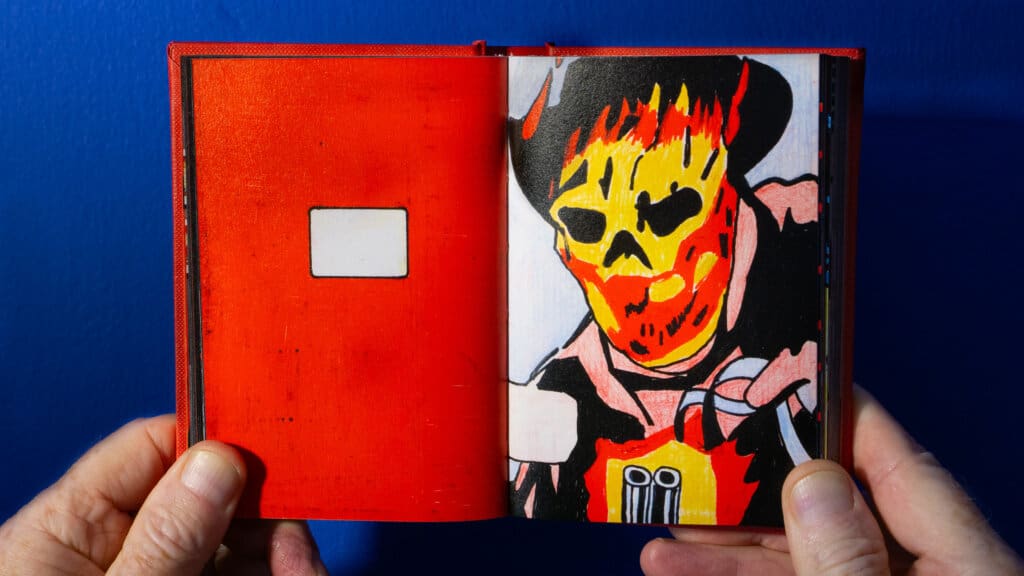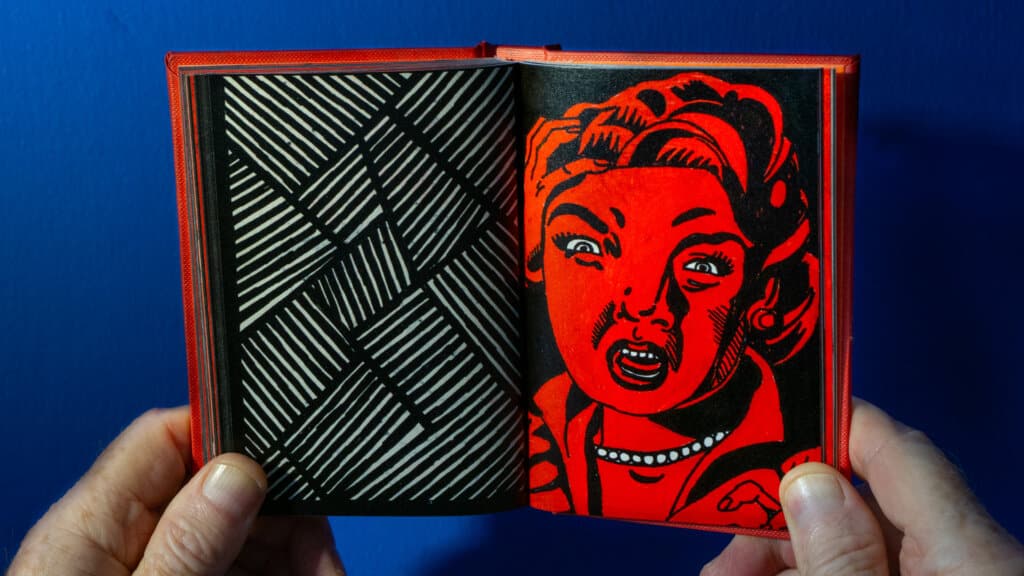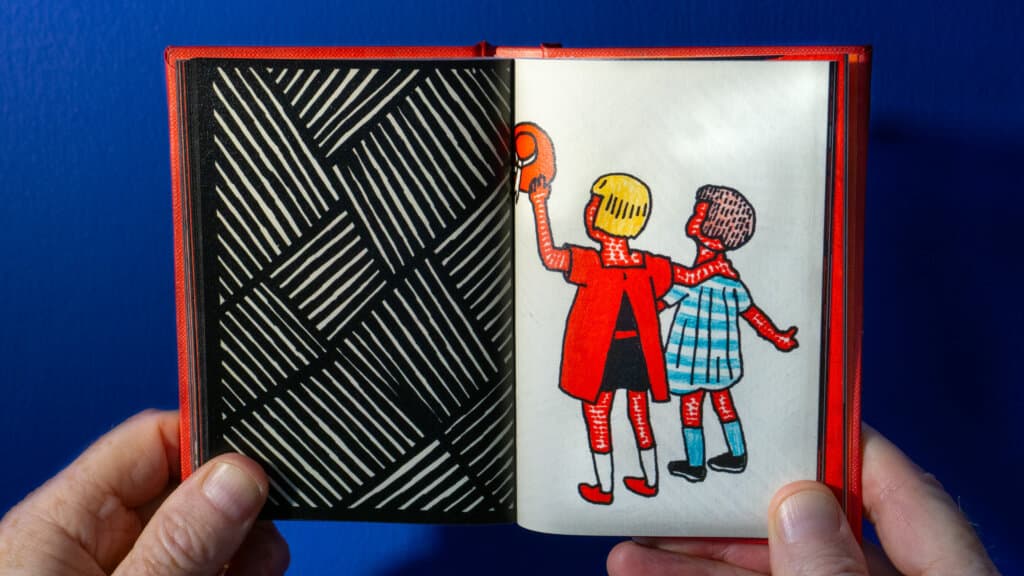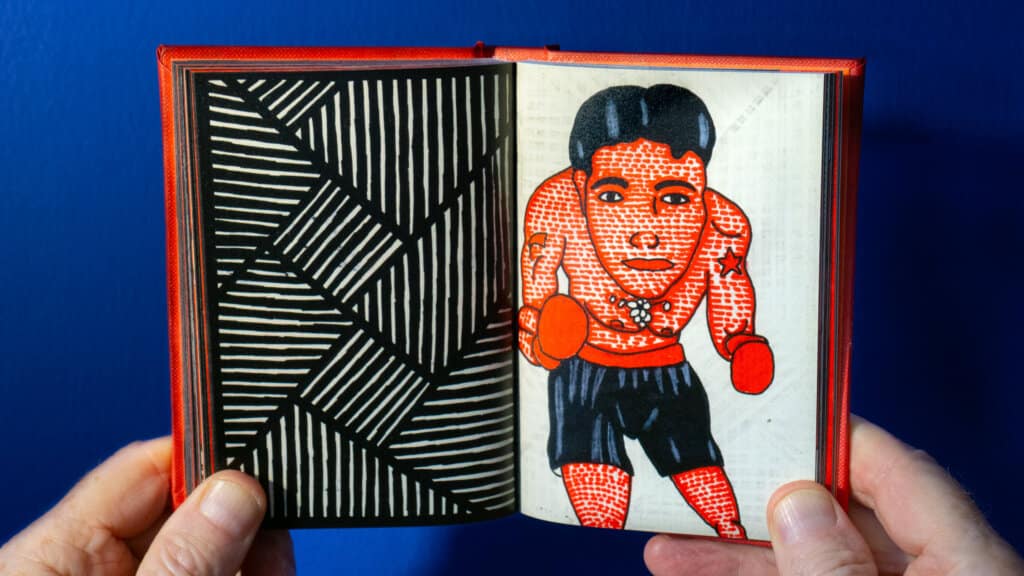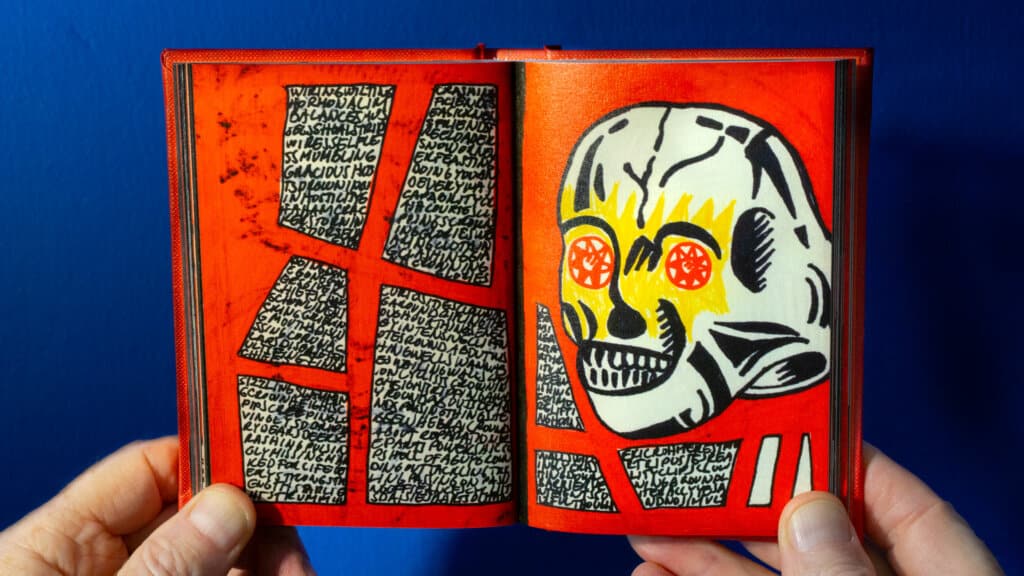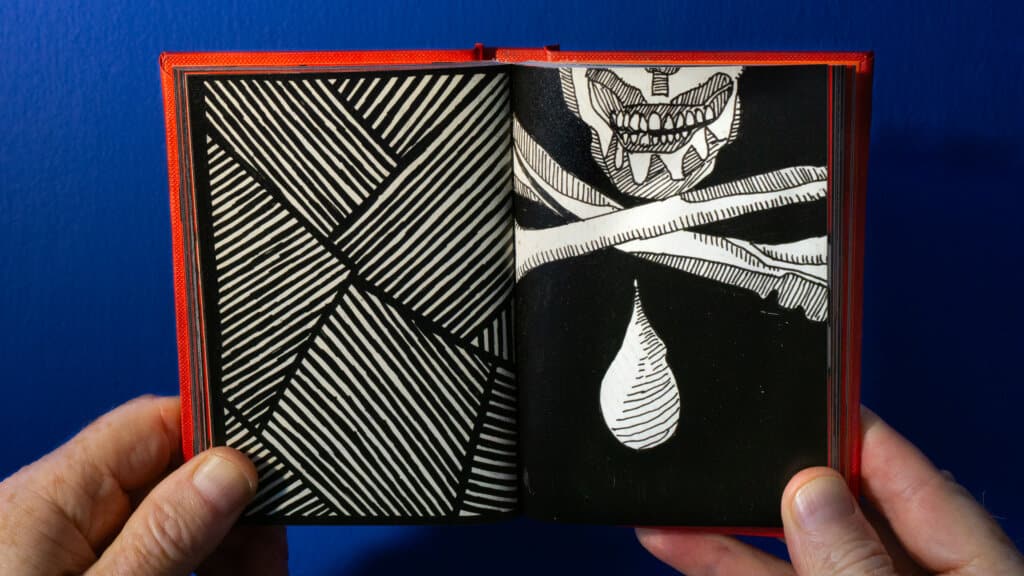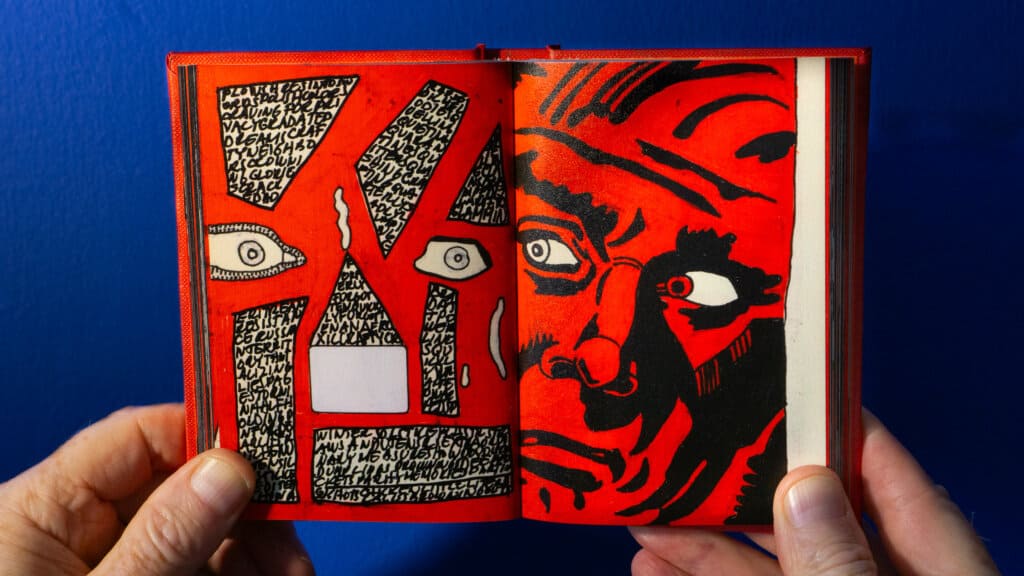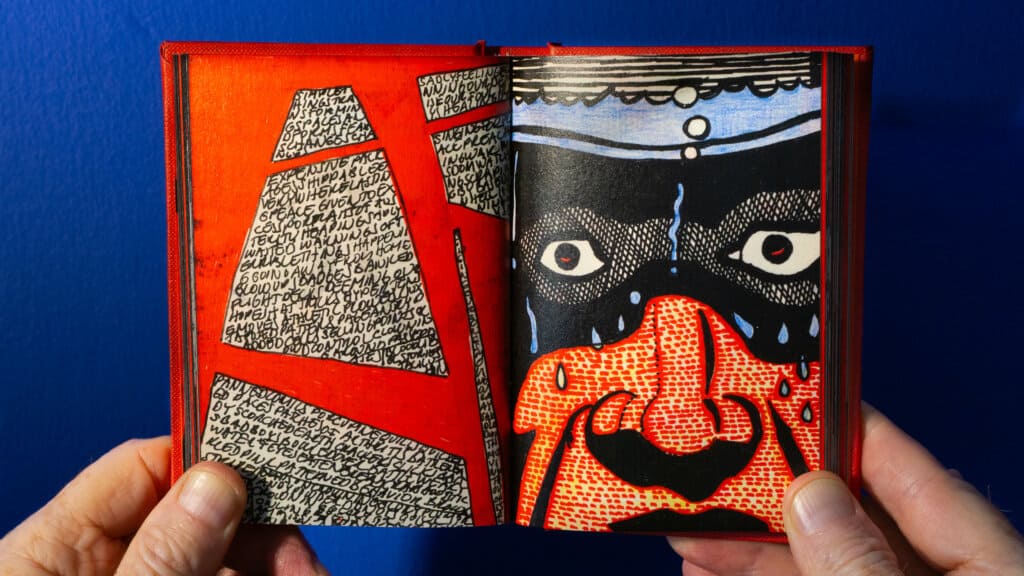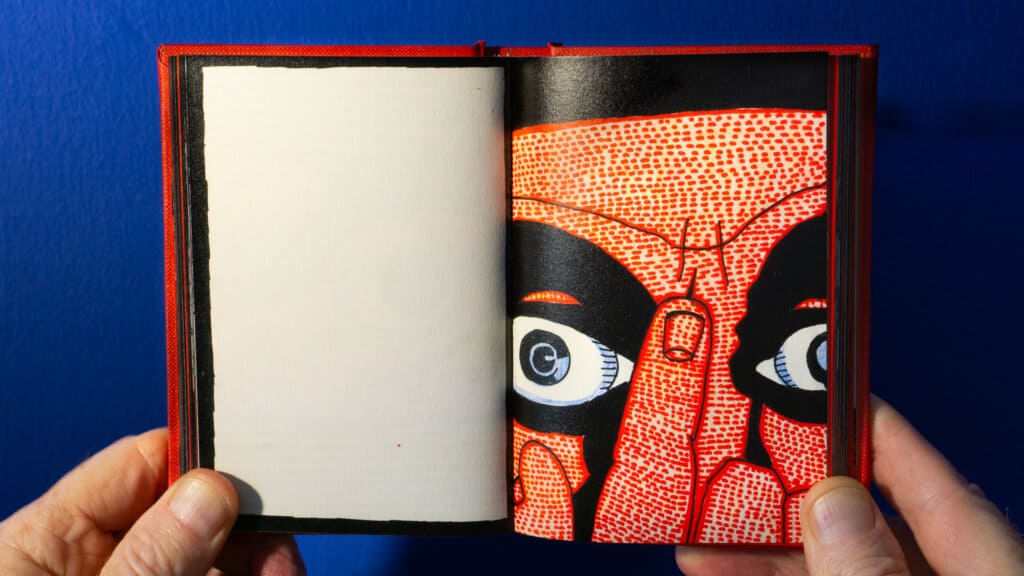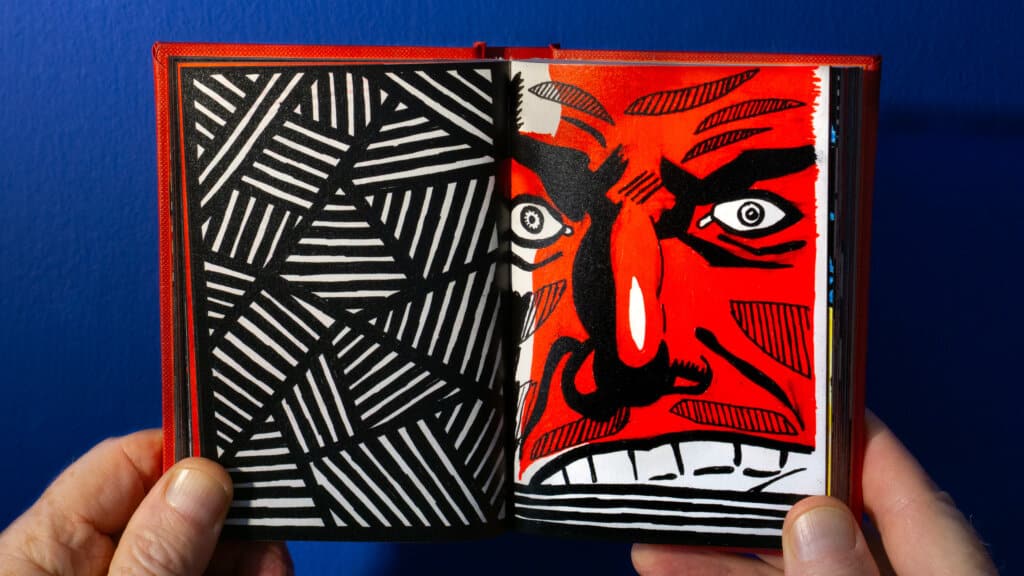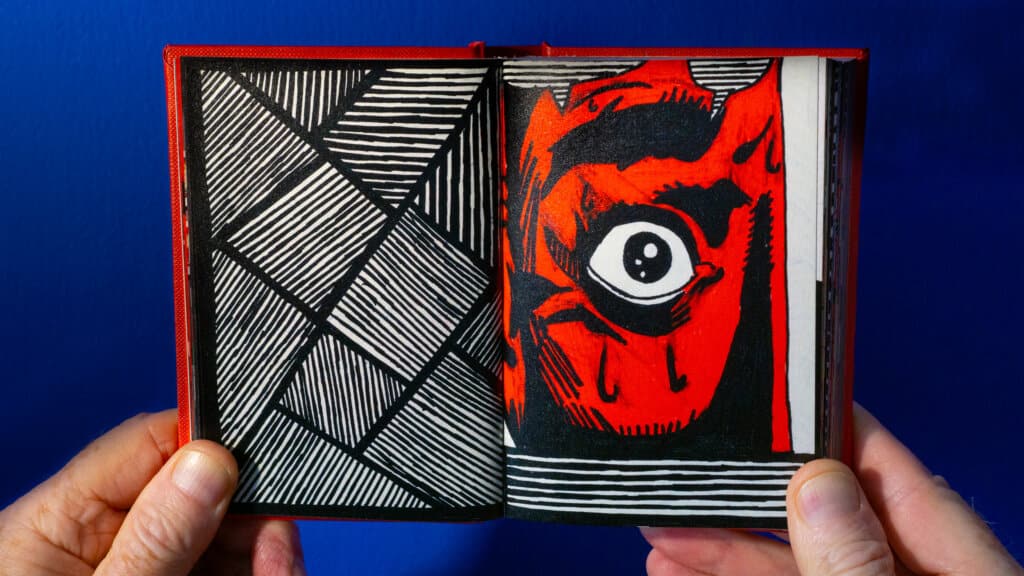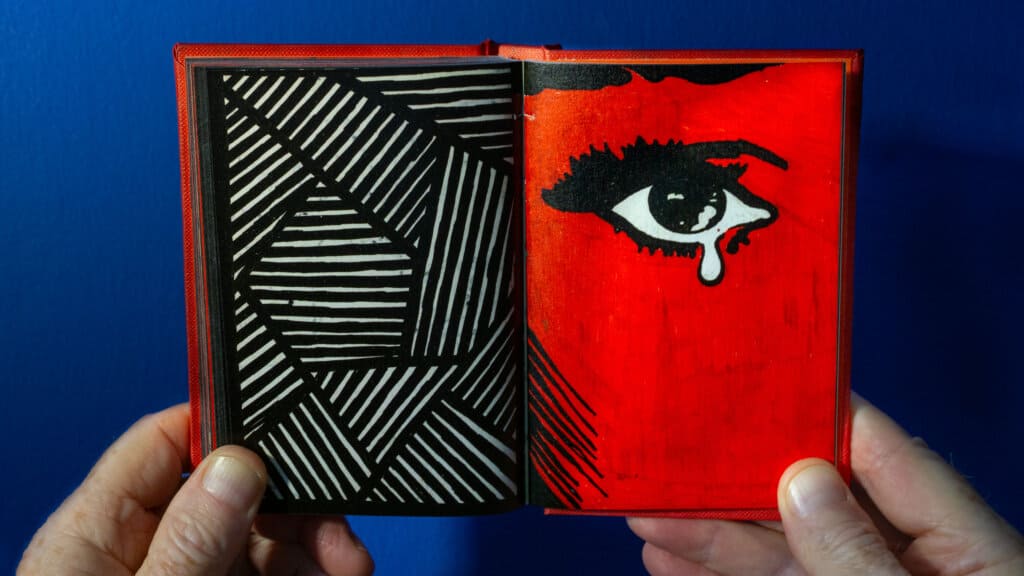Gary Goldstein: Running Up the Wall
Curators: Reut Ferster, David Frenkel
01/06/2023 -
25/11/2023
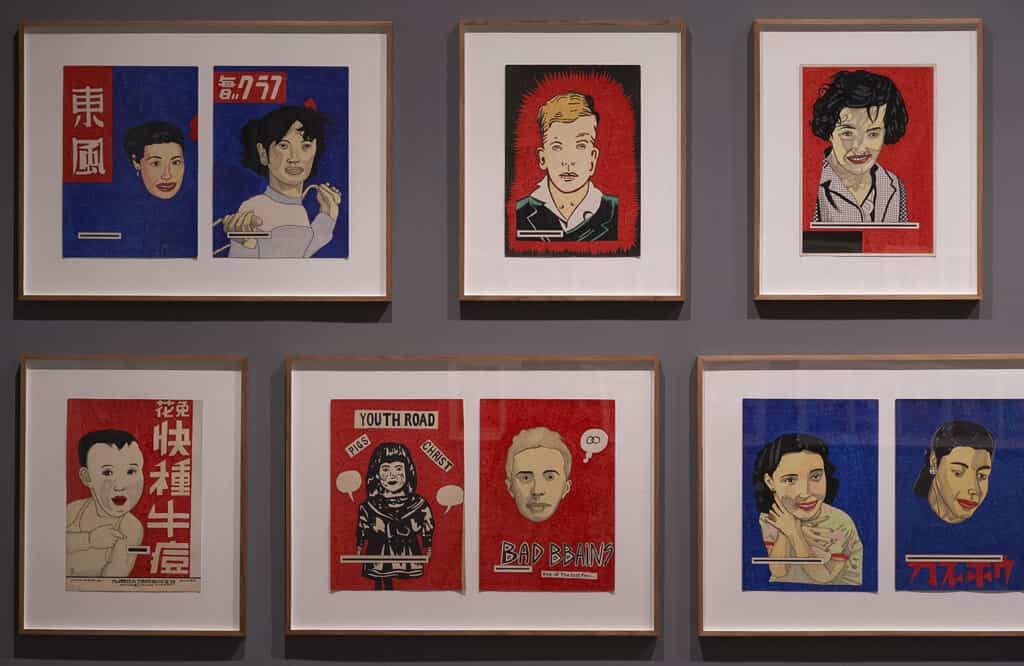
Fuzz. Fizzy. Effervescent. Orange. A kind of self-portrait. Fleshy. Flecks. Flickers. I see only in snips, in snippets. In parts. Nothing is whole.
— Gary Goldstein, in But There Was Love: Shaping the Memory of the Shoah
eds.: Michal Govrin, Dana Freibach-Heifetz, Etty BenZaken
Influenced as a child by American popular culture, Gary Goldstein’s visual vocabulary draws from comic books and advertisements, movie posters and commercial catalogues. His paintings are characterized by a direct, catchy graphic quality that refers to the quick, flat comic illustrations, but while comic strip paintings join together to create a continuous, coherent, and accessible story, in Goldstein’s work the images are removed from their original context, floating ambiguously in an emotional and sensory cognitive space.
Into the intensely expressive narrative language, which at first sight appears naive and even cheerful, creeps a disconcerting air of anxiety and gloom, disruptions and deformations. In some of Goldstein’s series, such as War Paintings and Book Covers, mouths gaped in horror, severed limbs, and chilling battle scenes emerge every now and then; a figure either squinting or merely trying to put on a presentable, though slightly crooked smile, is juxtaposed with another female figure who looks like she’s had surgery to repair a cleft lip; a male figure staring into the distance with a disturbing, hollow look, next to a gender fluid figure, possibly female possibly male. A forest of faces sprouts up to us from distant times and places, bearing the foreignness of migrants and accompanied by fragments of multilingual texts.
In recent years, Goldstein’s practice has been reduced to painting on the table in his dining room at home. He paints on small-format paper with simple instruments such as pencils, markers, and ballpoint pens, and settles for a basic color palette. A significant part of his work is based on taking apart old books, including atlases and art books, which he uses as a ready-made surface scarred by the teeth of time. On these used pages he employs a collage technique of erasure and pasting, concealing and painting anew, mostly linear and figurative painting. The erasures are not absolute, however; like a palimpsest –those recycled parchment scrolls from antiquity—the multi-layered product surrenders the ancient layers to which the new image refers, if only implicitly. In the series Objects, in which he used found objects such correction fluid containers or dental casts, Goldstein likewise covered the objects in white and then repainted on them, using a thin, decorative language, peppered with gallows humor.
Working ceaselessly, Goldstein creates intense series. His practice is typified by feverish repetition, which does not relax its grip until it fills the entire paper, echoing the horror vacui, diagnosed throughout the history of art in works overflowing with detail—a congestion that invites the viewer to delve into the dizzying multiplicity. Horror vacui is also associated with Outsider art, habitually created under circumstances of mental and social detachment outside the field of art, whose strange, enigmatic appeal often stems from an overwhelming excess of detail.
Goldstein’s compressed rhythms are obtained via pop-art style grids, recalling industrial printing techniques, while the abundant hatching simulates the sewing work of a diligent tailor. In the series Atlas 3, for example, Goldstein unfolds intricate structures that join together and envelope the main figure in a hermetic brace, to the point of suffocation. Instead of the geographical map that purported to convey an objective truth, each painting now offers a fragmentary mapping of a broken, dense, haunting world, like a multi-piece jigsaw puzzle shuffled and then hastily rearranged by an invisible hand. Goldstein’s handwritten text also forms a compressed, noisy texture, breathlessly taking over the entire space assigned to it, and its action masks the decoding attempts.
David Frenkel
Gary Goldstein was born in Nashville, Tennessee, 1950, to Holocaust survivor parents; he grew up in Hartford, Connecticut, and immigrated to Israel in 1977.
To my wife, Anat and my family who make my life and my work possible
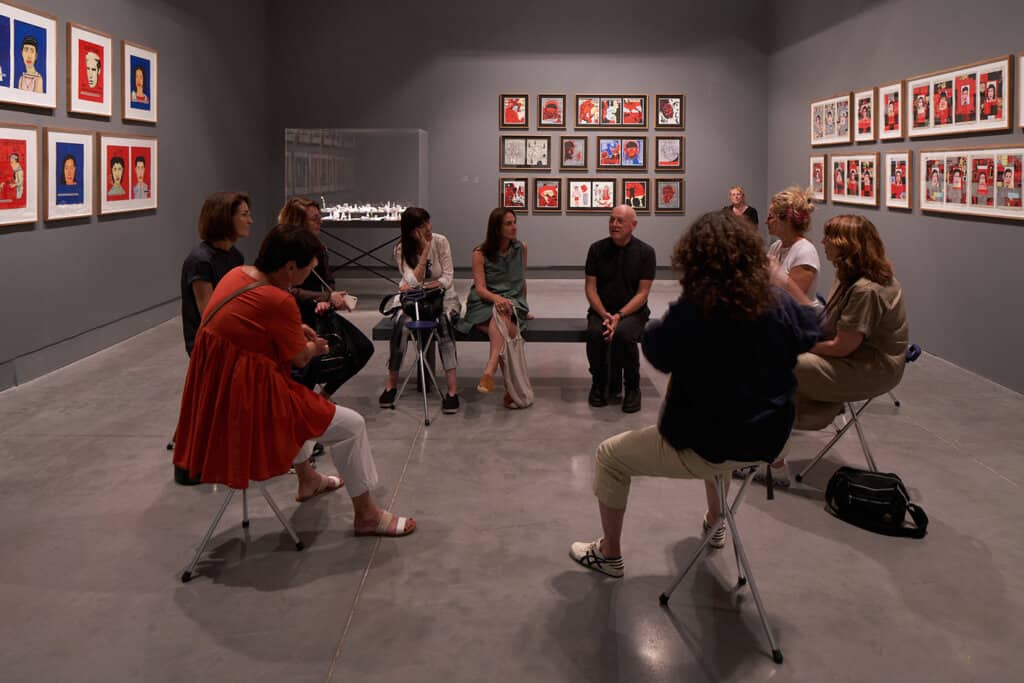
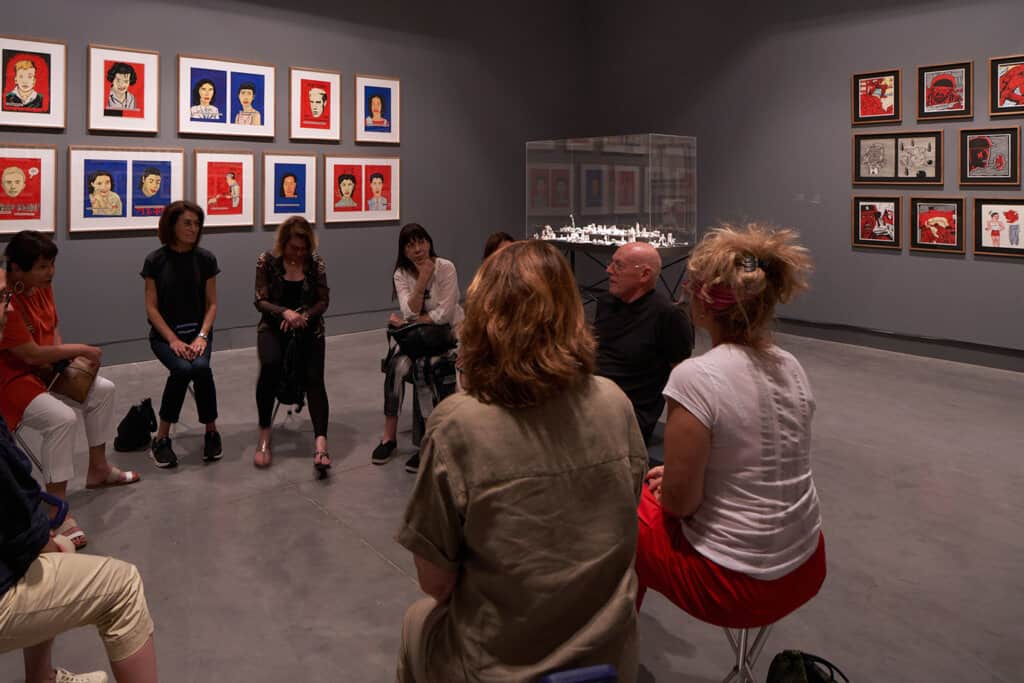
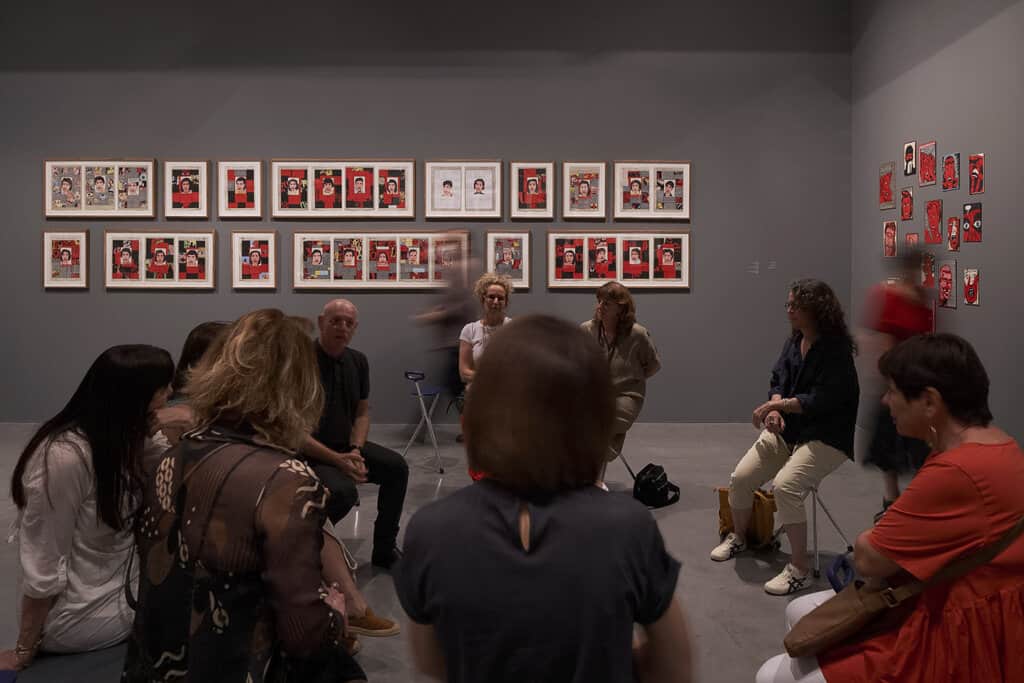
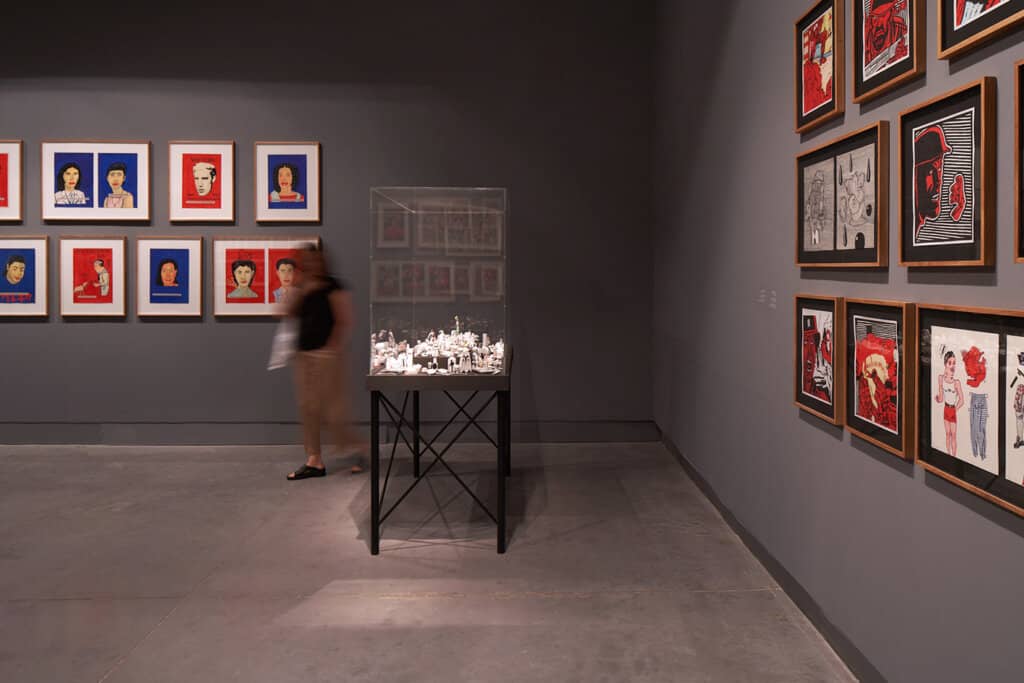
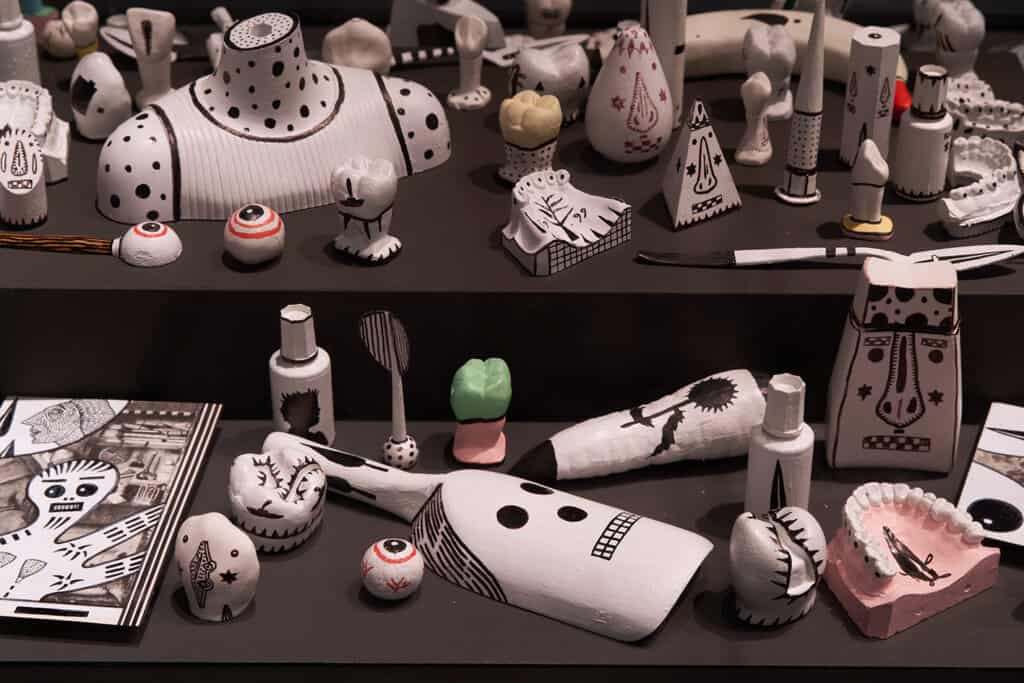
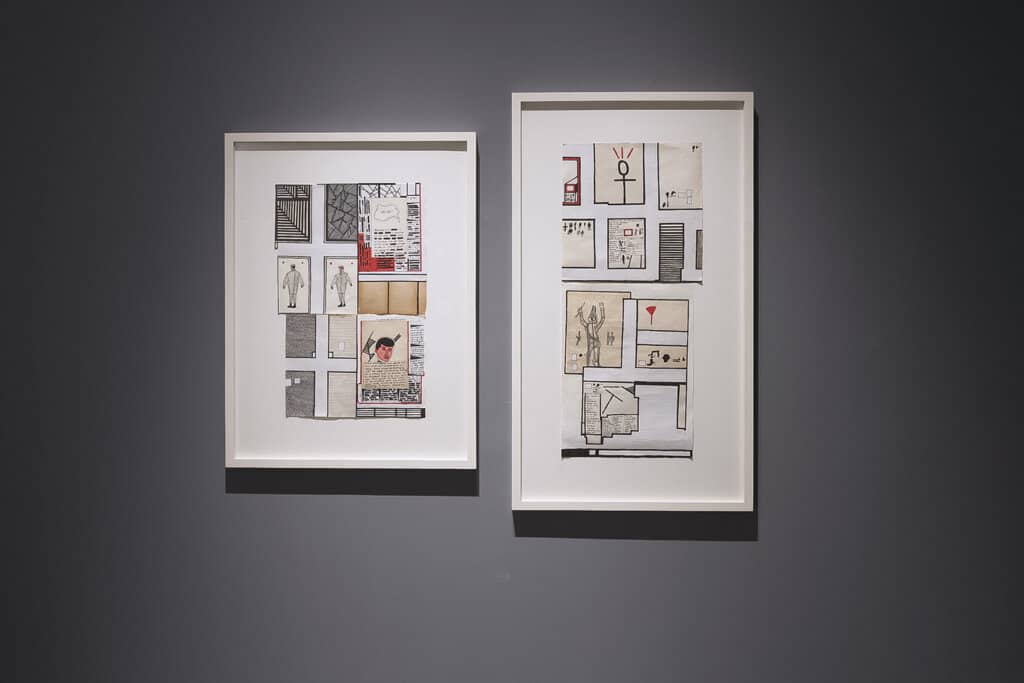
Installation photographs: Michael Shvadron
Bunker – A new artist book by Gary Goldstein
Design and production: Tal Solomon Vardy

